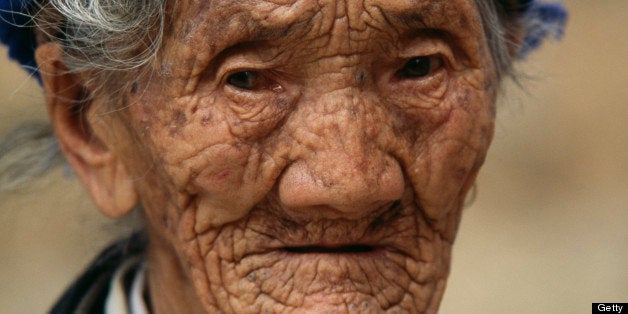
Although most of us know that the world is aging, the stereotype persists that aging is somehow fundamentally different in the developed, wealthier world. Developing countries, this story goes, have a large younger population -- due to greater fertility and poor health care that leads to earlier death of older adults -- but also revere their elders and take care of them within the family.
Like most stereotypes, it is too simplistic to be entirely true. In fact, the vast majority of developing countries are seeing their populations age just as America's is, but their rate of change is often even faster. Consider this startling statistic: It took France 115 years to see its population over the age of 65 double from 7% to 14%. Sweden took 85 years, and the United States took 69 years. In contrast, China will make a similar transition much faster, in just 26 years. Thailand, Brazil, Tunisia and South Korea will take even less time.
We in the U.S. often wring our hands about the "silver tsunami" that will overwhelm us because the population over 65 will increase by 100% before 2040. But now consider Singapore, Colombia, India, Malaysia, Egypt, Costa Rica, Bangladesh, Kenya, the Philippines and Morocco. These are not places we usually think of as "old," yet they are the countries that will see the greatest change during that period: All will see an increase in their older populations of more than 250%.
While some see this as a problem, Dr. John Beard, director of the World Health Organization's Department of Ageing and Life Course, argues that it is a success story and a cause for celebration. "We are basically seeing more children surviving childhood and more women surviving childbirth but also getting more control over their fertility," he said at a recent National Forum on Global Aging at the American Society on Aging. "When people say the population is aging and we're all going to do broke, we need to ask, 'what's new?' Before we used to have to support children; in the future there will be more older people, but the difference in older people and younger people is that children are really dependent: children require education, they require food, they can't work. To call all older people 'dependent' is actually a form of ageism."
So, what can we learn from the experience of other countries, and what do we have to teach?
- Well-established networks of services. The United States has a long-established safety net for income security for older people through Social Security, and an integrated system of agencies providing social services, coordinated at the local level. These are under tremendous strain, but we should not discount the importance of these existing mechanisms to identify and help those in greatest need.
- Focus on chronic rather than acute health care. Other countries -- including some in the developing world -- have done a much better job in focusing on providing lifelong health care focused on maintaining health and dealing with chronic conditions. Our acute care-focused system in the U.S., which pays more for more procedures and tests, has led to fewer doctors, nurses and other professions with specialized geriatrics training just as the older population is growing most rapidly.
- Changing family structures and long-distance caregiving. In many developing countries, the family has been the main, and sometimes the only, support for older people, but that is rapidly changing as the younger generations shrink and mobility to find better jobs leads them greater distances from their parents and older relatives. This is a change that the U.S. has been working through for 50 years, and long distance caregiving is an area in which we have developed systems and programs that may be helpful elsewhere.
- Growing old alone. Many other countries already have a higher percentage of older people who live alone than the U.S. has. For example, in France, over 50% of women over 65 live alone. The Baby Boomer generation in the U.S. is twice as likely to never have married or had children than their parents were, meaning that this will be the experience for many here.
Aging presents formidable challenges, but, as Dr. John Beard says, "we need to reinvent the way we think about ageing itself. We want to be stretching life in the middle, not just at the end. This means keeping people healthy for as long as possible, and giving them the opportunity to do the things they want and that society needs." It is a call to action we need to hear around the world.
